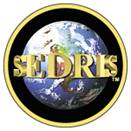
ISO/IEC CD2 18023-1 — SEDRIS functional specification

ISO/IEC CD2 18023-1 — SEDRIS functional specification
This part of ISO/IEC 18023 defines the semantics and structure used to represent environmental data along with the means to produce and access that data. A transmittal is the realization of an environment using the SEDRIS data representation model (DRM) that can be produced and accessed through the SEDRIS application program interface (API) specified in this part of ISO/IEC 18023. An inherent aspect of SEDRIS is the ability to express information about a wide range of natural, man-made, or virtual environmental objects and their characteristics. These can include such things as celestial bodies, rivers, forests, wind, ocean characteristics, atmospheric temperature, avatars, ships, roads, space stations, buildings, and animals. The emphasis is placed on representing the characteristics of such objects while specifying the interrelationships among them.
ISO/IEC 18023 in its entirety specifies a Data Representation Model (DRM), an abstract transmittal format (ATF), the SEDRIS transmittal format binary encoding (STF), and an application program interface (API) that supports both the DRM and the transmittal formats in creating and accessing SEDRIS transmittals as components of a data interchange mechanism for environmental representations. Other components of the SEDRIS interchange mechanism required to completely and unambiguously describe environmental data are described in two other international standards. These International Standards are the ISO/IEC 18025—Environmental data coding specification (EDCS) and the ISO/IEC 18026—Spatial reference model (SRM).
The SEDRIS interchange mechanism uses the DRM, in conjunction with the EDCS and the SRM, to provide a means for defining all of the data elements and their relationships necessary to create an environmental database. These components form the central core of successful data interchange. They allow the unambiguous description of environmental data. The DRM, through the registration process described in this part of ISO/IEC 18023, can be expanded to incorporate future environmental representation needs.
The SEDRIS API is the interchange mechanism component that provides the means to create and access data in a SEDRIS transmittal. It allows data producing or consuming applications to interchange environmental data between different proprietary database systems or formats. The API provides a coherent and complete interface to the data in a SEDRIS transmittal. The API allows the underlying implementation of the SEDRIS transmittal format to be transparent to users.
Complete and unambiguous data representation
SEDRIS specifies a standard approach to describe and communicate environmental information. This approach to representation of environmental data includes support for all domains of the environment, including ocean, terrain, atmosphere, and space. In addition, SEDRIS supports the various techniques that are used to model environmental data in a variety of information technology applications. Since such potentially diverse models and representations can describe the same object, or concept, through different data models, SEDRIS also includes the means to capture the polymorphic relationships of these representations. Furthermore, the DRM includes the necessary data elements, and their relationship to one another, that are needed to describe the environment fully and seamlessly across all domains.The combination of these embodies a standard mechanism that allows capturing, articulating, and communicating environmental data completely and unambiguously for use in systems or applications that deal with environmental data.
Universal, lossless data interchange
Interchange of data between two or more systems requires that “you get back what you put in”; the applications should be able to retrieve what they have placed in a transmittal. The interchange medium should not attempt to add value to the data, nor should it minimize the data so that it is less than the original submittal.
By providing a complete and unambiguous data representation and a robust interchange mechanism, SEDRIS enables the lossless interchange of data, regardless of its original form. The standard access interface, and the polymorphic representation of data through the DRM, ensures that users can share a common description of the environmental data.
Common access interface
The SEDRIS API provides a consistent interface between a software application designed to process the environmental data and the underlying SEDRIS transmittal medium. The API decouples all SEDRIS data-consuming or data-producing applications from the interchange medium’s data structures, allowing the format, its data structures, and the application to evolve independently of each other.
The SEDRIS API supports many forms of representation for location, colour, and units of measure. The contents of a transmittal may be simply traversed, object by object, or searched, based on data attributes and spatial coverage. Access to SEDRIS data is designed to be context-sensitive in order to support representational polymorphism. This context-based approach, through the use of search filters, also allows for limiting the number of objects that are examined.
Facilities are provided to efficiently interact with complex data types, such as data tables or images. The API also supports conversions between different spatial coordinate systems, units of measure, and colour representations.